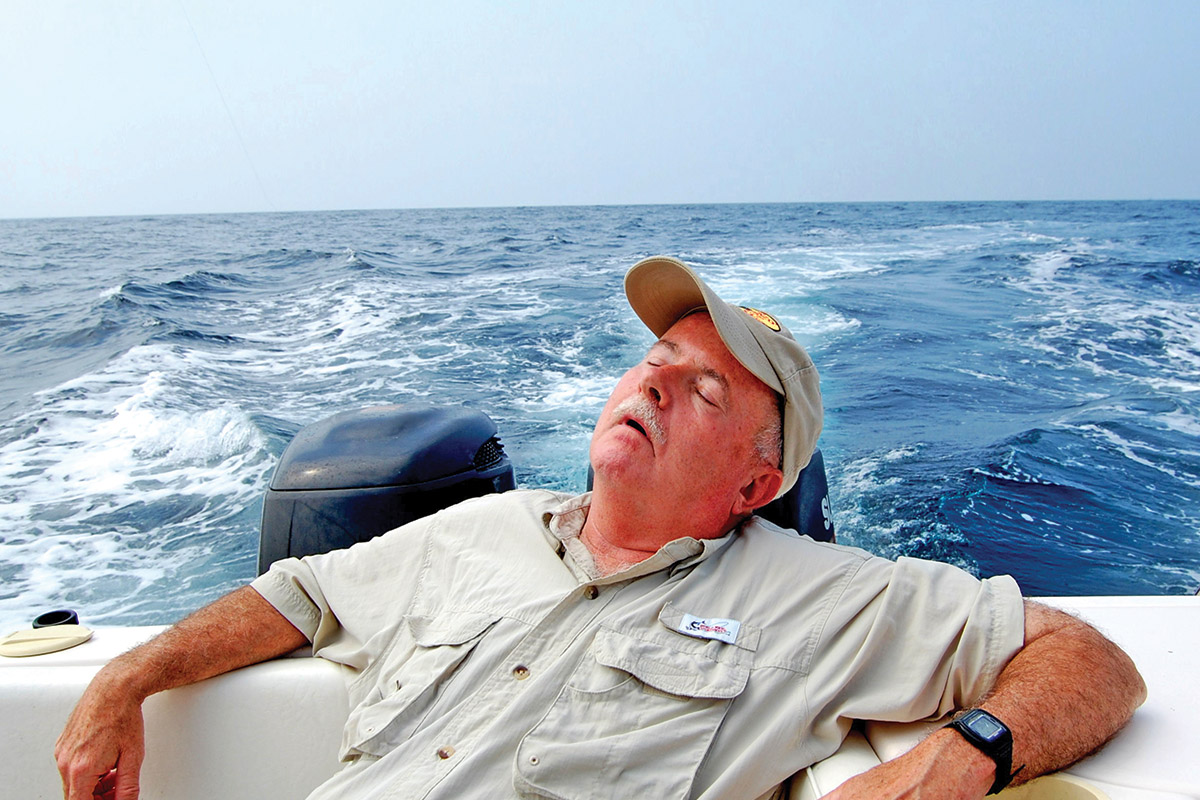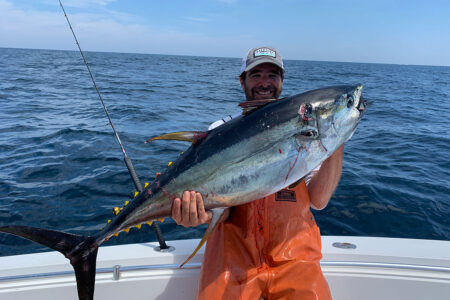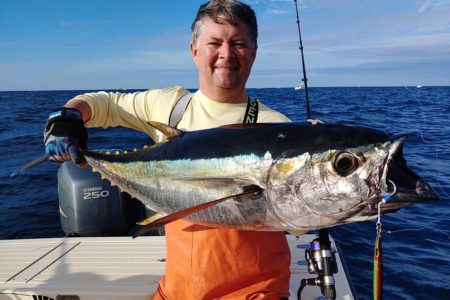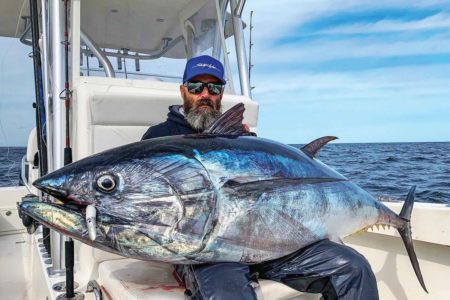
Pelagic lockjaw; now what?
My charter records show that fish often have mouths closed pretty tightly when a high pressure system sits directly overhead and in control of the weather. On the other hand, a moving barometer produced better results for clients, with a falling barometer producing good days and full boxes. But keep in mind, a falling barometer is also a sign of bad weather on the horizon and caution certainly needs to be heeded when heading offshore. Often a low pressure system (which drops barometric pressure) moves in earlier than forecasted, producing wind and waves that few anglers wants to be caught in. Cloudy days often produce better results than bright sunny days. Those big eyes on tuna are sensitive to light. This is one reason for pulling out of the slip at O’dark thirty. More often than not, there is a tuna bite at pre-dawn, right before the sun peeks over the horizon. The mere fact that a portion of the charter fleet are already through the inlet at 3 or 4 a.m. and have lines in the water before many boats cast off dock lines tells a lot about the early bite.
Lunar tables that predict good/bad fishing days may be worth taking a look at as well. The gravitational pull of the moon in conjunction with position of the sun controls tides, which is the rise and fall of water. When the moon and sun come into alignment on the same side of earth (new moon phase) “spring tides” occur, which cause those extreme high and low tides. Associated with spring tides is typically good fishing with moving water.
During spring tides, offshore water movement/current appears stronger, which causes fish attracting rips and upwellings to develop. Of course wind affects water movement as well and a big factor in offshore current. And while I have no scientific evidence to back up the theory for using lunar tables offshore, they seem to be more correct than wrong when it comes to predicting a decent day of fishing.
On slow days of trolling, pay attention. It is tiresome watching lines, but sleeping is a sure way to miss capitalizing on one of the few bites that might occur. Tuna are going to hook themselves, but don’t miss out on that white marlin that pops up unexpectedly behind the flat line ballyhoo without any warning. There is going to be a small window of opportunity, just seconds, to make the most of the bite by free spooling and setting the hook.
Trolling on slick calm days does not produce bait movement created from the boat moving/rocking up and down on waves and swells. Use a bird in front of some rigged bait or lures to create splash and add extra surface disturbance to attract fish. Dragging daisy chains and spreader bars are options; so are teasers that create additional surface disruption. Another trick is to slow the boat down. You may think just the opposite on a slick calm day, but actually a properly rigged ballyhoo or mullet will appear to be slowly swimming along naturally and often draws the attention of a pelagic when the boat is at 3 to 4 knots. And when that bite finally occurs, make the most of it; keep the boat in gear and have the crew grab and jerk the other lines to make the baits appear erratic and elicit additional strikes.
Since fish often are hesitant attacking surface bait on slick calm days (Marlin seem to be the exception to this rule.) drop one or two baits down deep using a planer. A silver or white colored drone spoon in size 5-1/2 is a good choice for planer lines or a rigged ballyhoo skirted in black/purple. This has saved many charter trips. Keep an eye on the sonar for bait balls or fish and place lure/bait just above this depth.
Change up your spread, switching to a variety of different type baits in different positions than normal. Dig out those dusty lures that looked great hanging on the tackle shop wall, but never had a chance to get wet. All these changes may not make a difference, then again, they might. Try a spread of small, naked ballyhoo or skirt all medium ballyhoo in various colors. Tighten the spread, spread it out, troll at 4 knots, maybe 7, and even push it to 9 if you have to (just make sure the baits do not spin). Troll a zigzag, go in circles, run against the current, with it, against it – mix it up if you have to! By all means, keep eyes to the sky for birds flying in the same direction. They may be heading for a bite that is developing. With height advantage, they see and hear other birds working off in the distance long before anglers in boats.
John Unkart is author of Offshore Pursuit and Saltwater Tales



